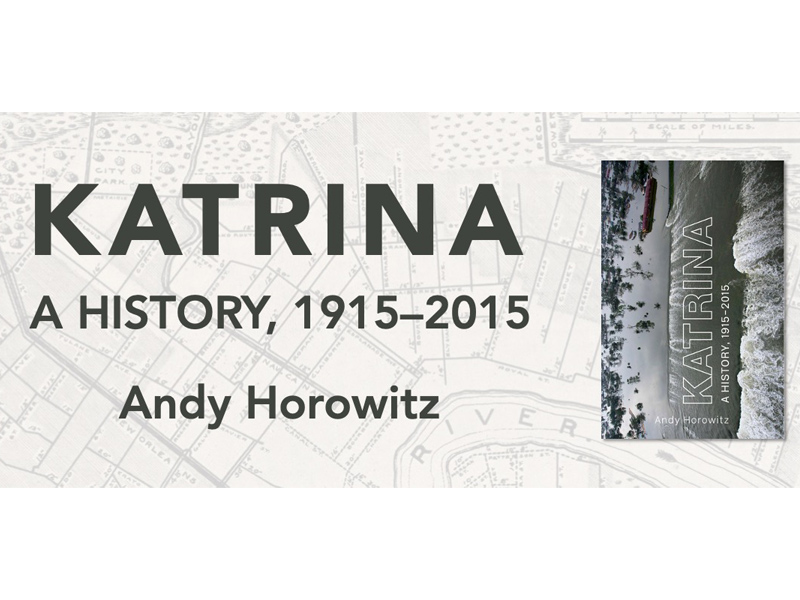It was in that year that a powerful and largely-forgotten hurricane hit New Orleans, leaving a foot of water in parts of the city for nearly a week.
Horowitz, who studies the history of disasters, said the 1915 storm and its consequences are linked to Katrina and is one of the many factors that informed his writing “Katrina: A History, 1915-2015” (Harvard University Press), now available in book stores and online.
“The city took the 1915 hurricane to be a test of what was then its new drainage system – and they believed that New Orleans passed that test,” Horowitz said. “The New Orleans Item went so far as to say that the city had proven to be ‘Storm Proof.’
“The experience of the 1915 hurricane confirmed a consensus, widely shared among engineers and developers, that New Orleans could and should grow beyond the high ground near the Mississippi River. And it was those new neighborhoods that suffered the worst flooding in 2005.”
Horowitz’s book, published just over a month before the 15th anniversary of the infamous storm that made landfall on Aug. 29, 2005, is divided into two parts — the first covering 1915 to the years just prior to Hurricane Katrina. Besides the storm of 1915, it includes chapters on the rise of Louisiana’s oil industry, Hurricane Betsy’s impacts in the Lower Ninth Ward, and the development of suburban St. Bernard Parish. Horowitz highlights the many critics who warned of the threats caused by Louisiana’s oil industry, land loss and an ethos that pitted individual economic programs against community security — including predictions of what ultimately occurred when Katrina made landfall.
The second part of the book covers Hurricane Katrina and the following decade. It includes everything from the levee failures and “inept” rescue operation to calls for New Orleans to be abandoned and a series of racist attacks on African Americans. It also traces the development and implementation of policies that reshaped the greater New Orleans area after the storm.
“One fundamental question I wanted to answer about Katrina was, simply, ‘who flooded?’ Horowitz said. “And my research shows that the best way of predicting whether a house flooded in 2005 was not the race or class of its inhabitants, but the building’s age.
“As I write in the book, it was not primarily poor New Orleans or rich New Orleans, nor was it white New Orleans or Black New Orleans, that flooded during Katrina. It was 20th century New Orleans. And yet, I also show that the flood itself did not determine who could return to the city. Political decisions and social arrangements did. So-called recovery policies, more than the flood, account for why white people disproportionately came home while African Americans did not.”
Horowitz said that while there have been multiple books published on Katrina, which he called the nation’s “iconic and paradigmatic disaster,” most have focused on it as news, without delving into the history.
“Fifteen years after the flood, I thought it was time for a historian’s assessment: to write about it with the perspective that time and distance affords, and to try to figure out what were Katrina’s most significant causes and consequences,” he said.
Publisher’s Weekly called the book a “vivid and persuasive chronicle of the causes and consequences of Hurricane Katrina. “Even readers who have never visited the Crescent City will be moved by this incisive account.”
John Barry, author of “Rising Tide: The Great Mississippi Flood of 1927 and How it Changed America,” called the book “the most important book about Katrina so far.”
“Horowitz properly places the disaster of Hurricane Katrina in the much larger context of regional history, national and local policy decisions and societal mores which all added up to having tragic if — mostly — unintended consequences, while not losing sight of intimate details and the personal stories of those who experienced the storm and rebuilt the city,” Barry wrote.
Original post https://alertarticles.info



